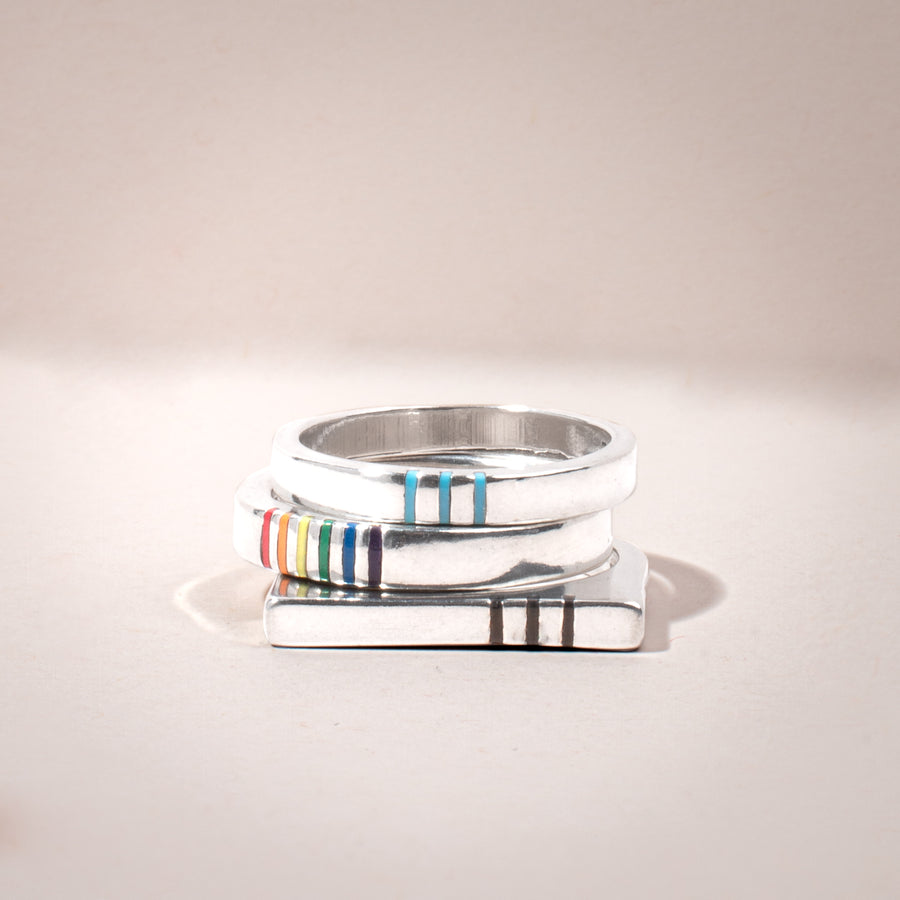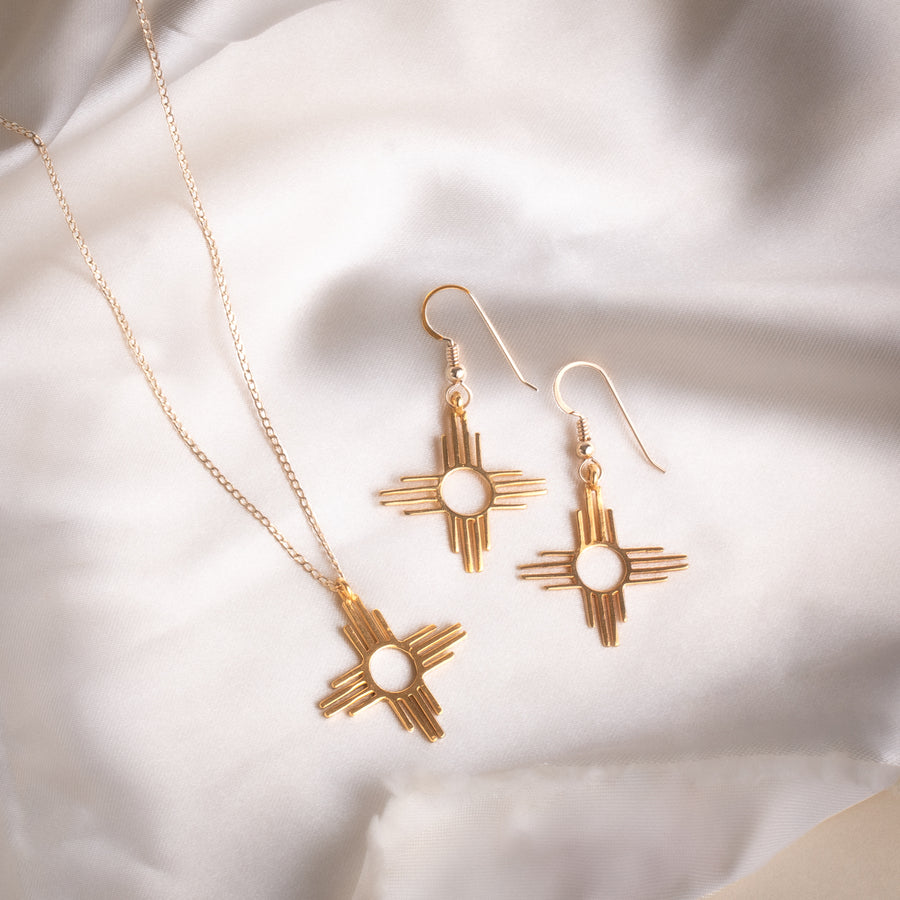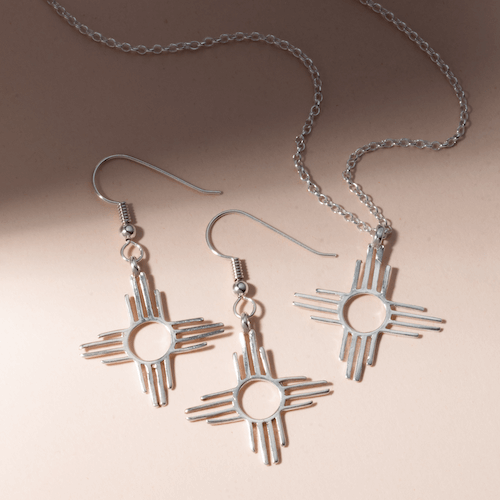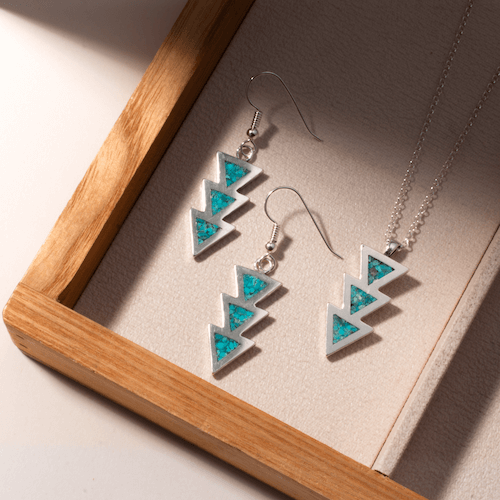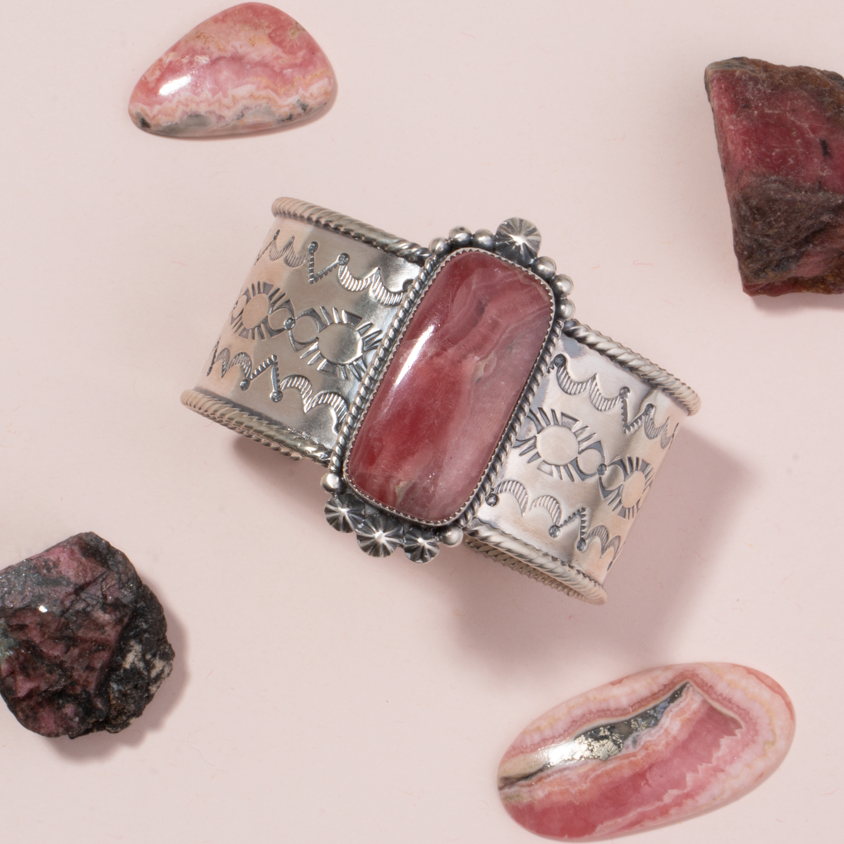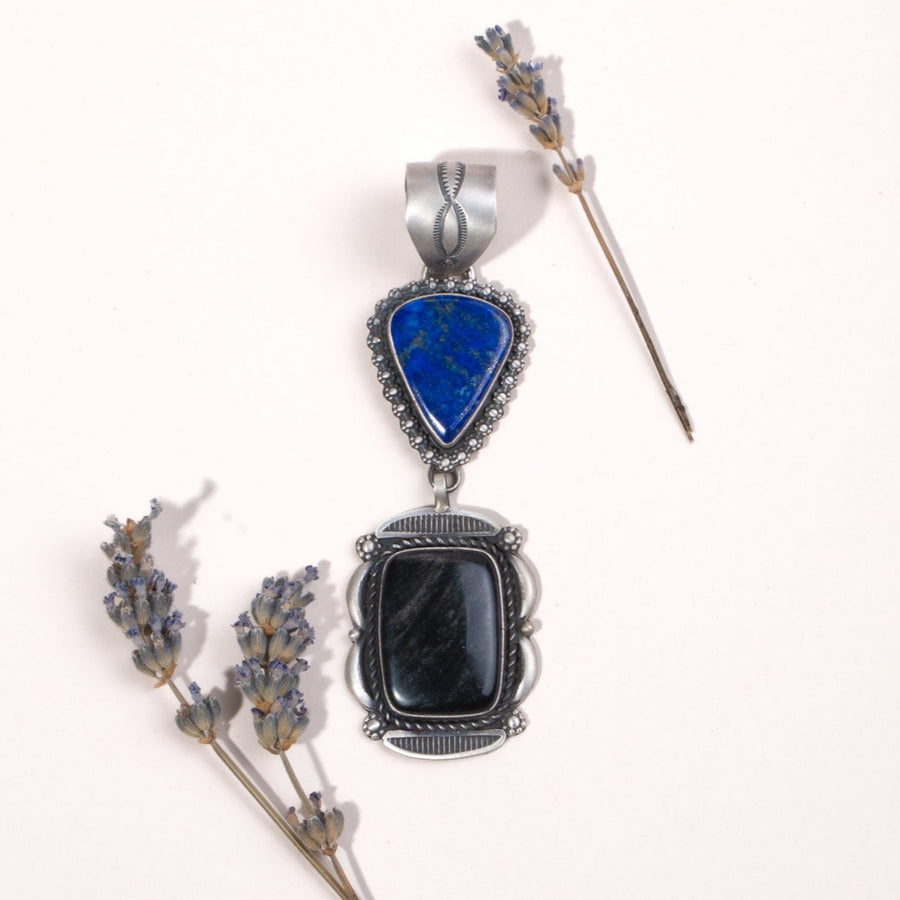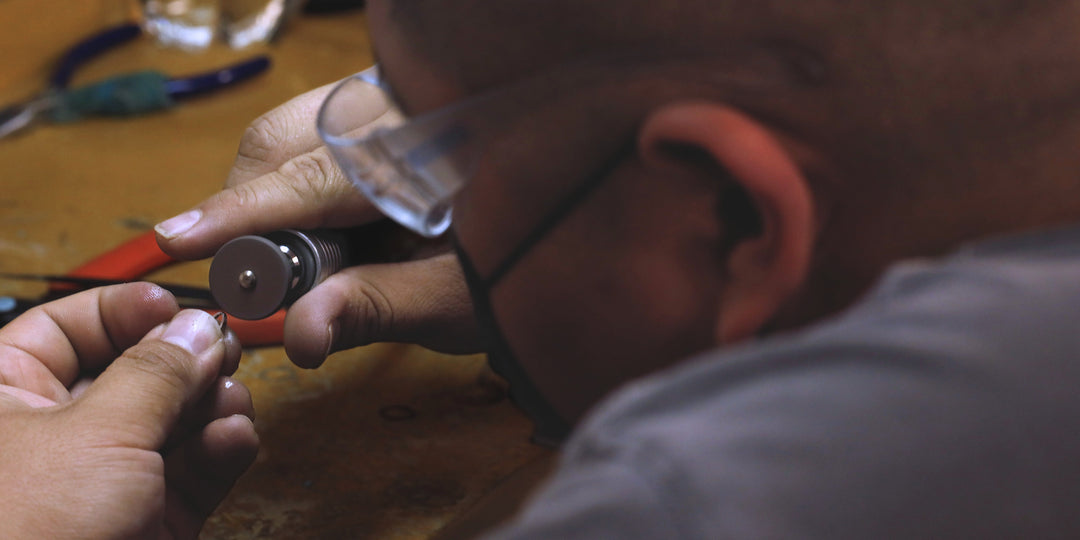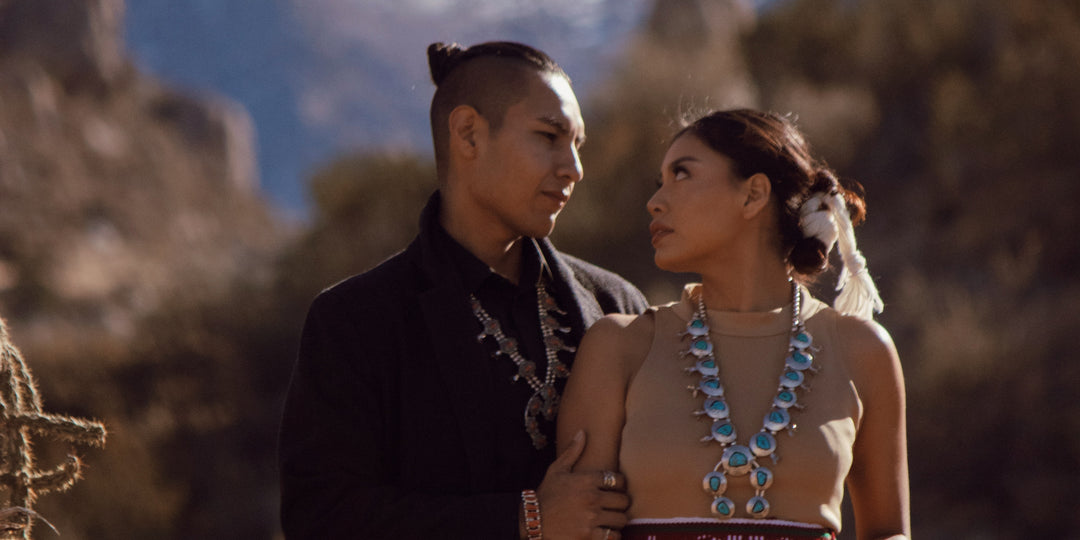Native American Use of Coral in Jewelry
The color, red, symbolizes many concepts to the American Indians. Some associate it with birth, violence, war, blood, wounds, strength, energy, power, happiness, and beauty. Many Native Americans used red to color depictions of the Thunderbird and lightning, representing power and speed. The Zuni, especially prize the color red, and, when Europeans first began to trade Blood Coral, with its intense red color, with the American Indians, nearly 600 years ago, it rapidly became an important trade item between the two cultures.

As far back as 30,000 years ago, Stone Age peoples used coral to decorate sepulchers, or burial vaults, and the ancient Egyptians used it. However, Blood Coral comes mostly from the Mediterranean Sea, and Native Americans have only had contact with it since the arrival of the Europeans into the New World. Prior to the arrival of the Spanish to the Americas, Indians used argillite to accent their jewelry and clothing with red. Having a red very dull compared to that of Blood Coral, the Indians were quick to substitute the argillite for coral, once it became available.
Although coral seems rock-like, it is actually a calcium carbonate (CaCO3) skeleton produced by coral polyps: tiny marine creatures that live in rich, clean, tropical to sub-tropical shallow waters of the world’s oceans. The coral polyp that produces Blood Coral, the most valued of the corals used in jewelry and other pieces of art, forms branched skeletons reminiscent of small, red trees. The coral polyp deposits calcium carbonate, forming the skeleton that divers harvest for use in artwork.
Many types of coral exist, but the red Blood Coral and pink coral draw the highest price on the market. Corals, though, come in a wide variety of colors, including blue, blush pale pink (Angel Skin Coral), rose, orange, deep red (Ox Blood Coral), black (Conchiolin), and white. The valuable orange red coral, from the Mediterranean Sea has suffered from excessive harvesting and reduced water quality. Today, the red corals come largely from Japan and Australia. Black Conchiolin comes from Hawaii.
The scarcity of Mediterranean red coral has spurred artists to utilize Bamboo Coral, another type of branch coral. It varies from grey through yellowish or tan, and artists dye it red. This type of coral appears in artwork from the Native Americans of Santo Domingo and San Felipe, as well as from the Navajo.
Coral jewelry has always drawn a high price on the market, and, the early Native American coral jewelry was no exception. The Native Americans often carved shells into small, disk-shaped beads called, “heishi,” and often used them as spacer beads between more the more precious stones, including coral. According to an article on American Indian Coral, …
“Coral beads symbolize success and social prominence. The Native American people consider coral a sign of wealth and status … When you look at early multi-strand coral necklaces, it becomes evident that the wearer added strands of coral as they were able, as their wealth or social standing grew. Once, American Indian artist, Mary Rosetta brought out a few shoeboxes of her “private coral” … [T]his was the equivalent of her savings account.” (Hopkins-Struever, 2015)
The high cost of coral comes partially from the harvesting process: diving and collecting in the ocean. Hand collection is costly and has inherent risks. In addition, harvesting and other intrusions, like global warming and pollution, have threatened coral reefs. Coral has become scarcer, and coral collecting opportunities have greatly diminished. Much of the Mediterranean Blood Coral on the market today was collected prior to World War II. As these coral stocks run out, and natural populations recover slowly, if at all, coral prices continue to rise.
Today, a great deal of imitation coral, produced from plastics, glass, bone, and porcelain, have come into the market. Experts distinguish natural coral by its distinctive wood grain texture.
Coral in Art
Long before the Spanish brought Blood Coral to the New World, the Native Americans had mastered the craft of making beads and using them to produce artwork. Prior to having access to red coral, the they carved beads from shells, stones, copper, silver, wood, amber, ivory, bones, horns, and teeth. The glass bead, so commonly associated with Native American beadwork, likewise came to them from Europe, and they’ve only used it since historic times.
Navajo Indians and Native Americans of the Hopi and other Puebloan villages readily adapted their skills to grind, cut, and drill this coral, by hand, into beads for their jewelry-making and for beading clothing and other items. By the late 19th Century, the Indians of the Hopi Pueblo wore coral during their snake dances. The People of the Santo Domingo Pueblo “
Eventually, as the Native Americans mastered the art of silversmithing, they produced many different types of jewelry and clothing items, like rings, bracelets, belts, buckles, pendants, earrings, chokers, and bolo ties. During the 20th Century Zuni, C.G. Wallace, utilized natural Mediterranean coral and fathered skilled jewelers like Leekya Deyuse and Dan Simplicio (Hopkins-Struever, 2015). Gem cutters have formed coral into gemstone-like figures or carved flowers, animals and other forms, and smiths set them into fine, handcrafted sterling silver.
Native Americans often combine turquoise with their coral in silver jewelry. Both minerals, borne of water … the former on land, the latter by sea … symbolize the union of earth and water and the red associated with birth bound by the purity of white silver.
Modern spiritualists also attribute many curative qualities to coral, some of which the ancient aboriginal people also considered characteristic of the red calcium carbonate. It has been associated with lung and digestive health as well as blood circulation and the circulatory system, and people have related it to harmony, emotional stability, protection, energy, wisdom, and happiness.
As important as the material beauty of the stones are the Native American values of the jewelers and other artists that fashion artwork containing Coral and gemstones. Coral’s red color has important symbolic meaning in the Native American culture. It represents, for example, heat or fire, representing the spirit within, energy, and power. Thanks to Native American artists, these symbolic values have spread through the Americas and elsewhere, passing through the workshops of the peoples who bring to life the qualities of the coral and fittings as they impart upon them their own values and native spirit.
References
American Indian Originals. date unknown. Native American Symbols and Gemstones used by our Indian Jewelry Makers: What they Mean in American Indian Culture. American Indian Originals. [Online] American Indian Originals Native American Store, date unknown. [Cited: February 5, 2015.] http://americanindianoriginals.com/contactus.html.
Hill, C. 2010. Native American Stone Bracelets. Native American Sterling Silver Stone Bracelets. [Online] Horsekeeping, LLC, 2010. [Cited: February 5, 2015.] http://www.horsekeeping.com/jewelry/bracelets/stonebracelets/stonebracelets.htm.
Hopkins-Struever, M. 2015. American Indian Coral & Spondylus. American Indian Art for the Collector. [Online] Martha Hopkins Struever American Indian Art for the Collector, 2015. [Cited: February 5, 2015.]
Lewis, J. date unknown. Coral. The Trade Roots Collection. [Online] Trade Roots Collection, date unknown. [Cited: January 5, 2015.] http://www.traderoots.com/Coral.html.
- Native American Jewelry Materials – Coral History. Native American Jewelry Tips: About Navajo, Hopi, Zuni, Santo Domingo, Apache and Oglala Lakota Jewelry and Artifacts . [Online] Horsekeeping.com, 2010. [Cited: February 5, 2015.] https://nativeamericanjewelrytips.wordpress.com/2010/07/25/native-american-jewelry-materials-coral-history/.
Owens, B. 2015. Coral in the Sacred Path. Native American Totems. [Online] Native American Totems, 2015. [Cited: February 5, 2015.] http://native-american-totems.com/sacred-path-medicine/coral-in-the-sacred-path/.
Warpaths2PeacePipes.com. date unknown. Color Meaning and Symbolism. Warpaths2PeacePipes.com. [Online] Warpaths2PeacePipes.com, date unknown. [Cited: February 5, 2015.] http://www.warpaths2peacepipes.com/native-american-symbols/color-meanings-symbolism.htm.
